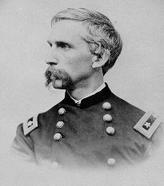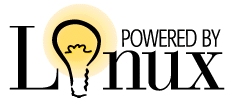 Creative Commons Attribution-ShareAlike 2.5 License, at your discretion.
Creative Commons Attribution-ShareAlike 2.5 License, at your discretion.

Linear Algebra is a text for a first US undergraduate Linear Algebra course. You can use it as a main text, as a supplement, or for independent study.
It is Free. The book, the complete answers to all exercises, classroom presentation slides, and a lab manual using Sage, are all available for download. You can also buy a paper copy of the book for not much money.
Please note: the canonical web page for the book is now hefferon.net/linearalgebra. This site is mobile friendly and has a number of other advantages.
This is the current official version of the text and the answers to exercises. Save these files in the same directory so that clicking on an exercise takes you to its answer and clicking on an answer takes you to the exercise. (You need a PDF reader that supports this; one is Adobe Reader.)
You can get a paper copy for just about the cost of media, about $22. Click on the Amazon link below or you can use ISBN-13: 978-1944325114 at your favorite site. (Bookstores can buy from NACSCORP or from Ingram via LightningSource.)
If you are teaching out of this text then note that you can receive a free paper desk copy at OpenIntro.org, an organization that works to make texts like this one easier to adopt. You may also be interested in the beamer slides for classroom presentation. These are compiled from the text source, so the theorems and definitions have the exact same wording. But the slides use different examples than the text so that students see twice as many. (There is a version of each slide deck without pauses, for printing out or posting in your learning management system. In addition, the main slides omit some proofs in favor of examples so there is also a version of each deck that includes all proofs.)
If you are studying Linear Algebra on your own then have a look at the videos. These are based on the slides and allow a person to see an introduction to each subsection. After watching the videos, then reading the section, and then doing the homework in the section, you are ready to go on to the next subsection.
Linear Algebra also has a supplemental, optional, lab manual using Sage. This is the second lab edition.
If you are into LaTeX then you may be interested that Linear Algebra has a source repository.
Finally, if you find the book useful then you could make a contribution. This is entirely optional but contributions help with things like examination copies for conferences. A common amount is $15 but for whatever you send, thank you!
Prof Harold W. Ellingsen of SUNY Potsdam has shared his Matrix Arithmetic, for teachers who want to cover matrix operations after the first chapter (the text covers them in the third chapter as part of linear maps). It is under a Free license, and you can get the LaTeX source.
You can also get the problems and their solutions that I assigned for take home work when I taught the class in the Fall of 2014.
This text is Free.
Use it under either the
GNU Free Documentation License
or the  Creative Commons Attribution-ShareAlike 2.5 License, at your discretion.
Creative Commons Attribution-ShareAlike 2.5 License, at your discretion.
For bookstores: thank you for being concerned about my rights. I give instructors permission to make copies of this material, either electronic or paper, and give or sell those to students. But first note that a you can get a paper copy from Amazon, or NACSCORP, or directly from Ingram via LightningSource, using ISBN: 978-1-944325-11-4, for basically the cost of printing.
Please don't order used or unofficial copies since they can have significantly different content and pagination. Any savings from old versions are tiny compared to the cost of confusion, particularly confusion to me since I get contacted about already-fixed bugs. The current version says “Fourth edition” on the front cover.
For instructors who want to modify the electronic text.
Please, feel free.
But as a favor I ask that you
include a statement about your modifications.
That way people making reports know who to write.
Putting something like this on the cover would be great: \fbox{\parbox{0.75\textwidth}{The material in the second appendix, on induction, has been added by Professor Jones of UBU. Send reports about this material to \url{sjones@example.com}.}}
I am glad to hear from both teachers and students. I enjoy hearing about the experience that folks have with the book and I find suggestions helpful, especially bug reports. I save these and periodically revise.
If you have something that you are able to share back then I'd be glad to take a look. For instance, I would love to have a topic on Machine Learning, or some sub-topic such as dimension reduction. Of course, I reserve the ability to choose whether to edit or include it. I gratefully acknowledge all the contributions that I use, or I can keep you anonymous.
In particular, I would like exams or problem sets. Some instructors have questions about using a text where the answers to the exercises are downloadable. (I can't resist noting that for any widely-available text the Internet has copies of the answers.) Thus additional sets of exercises without answers would answer the requests of some instructors. If you could contribute your TeX or LaTeX source that'd be great because then instructors could cut and paste.
I would also welcome contributions for electronic tools. For instance, if you have sets of questions that are suitable for Moodle quizzes and that you could share with other users of this book then write me and we can see about making them available. The same holds for WeBWorK problem sets. And, I would be glad to be able to include in the distribution a deck of Anki cards.
My contact information is at hefferon.net.
I have two other texts. Both are Free. My Theory of Computation covers Turing Machines, the Halting problem, Automata, and Complexity. It is now version one and ready for classroom use. And, my Introduction to Proofs is for a proofs course taught using the Inquiry-Based method (also known as the Discovery method or the Moore method). It covers elementary number theory, sets, functions, and relations.
In addition, you may also like my Cheat Sheet for LaTeX math, aimed at undergraduates but useful for anyone.


Open Source software is a great idea. This project would not have gotten done without it.
(Credit for the logo to Matt Ericson.)